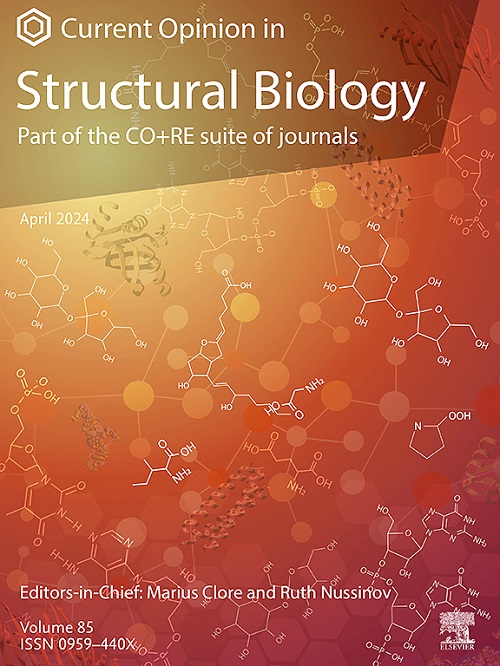Chromatin as a three-dimensional memory machine
IF 6.1
2区 生物学
Q1 BIOCHEMISTRY & MOLECULAR BIOLOGY
引用次数: 0
Abstract
Epigenetic memory—the stable inheritance of a cellular state over cell generations—has long been associated with chromatin modifications. But individual modifications are very dynamic. How can they carry information across cell generations? Recent theoretical work suggests the answer might lie, in part, in the three-dimensional organization of the genome. Cooperation between marks brought together by genome folding can correct epigenetic errors, making stable memory units out of unstable marks. If marks direct the phase separation of chromatin, the resulting bidirectional coupling between marks and structure provides a mechanism for many of these units to operate independently along the genome. Models of bidirectional coupling have helped identify elements, such as formation of a dense compartment, 3D mark spreading, and limited enzyme, which may be key to stable epigenetic memory. An analogy between these 3D models and a classic model of associative memory hints at a way chromatin could perform sophisticated information processing.
染色质是三维记忆机器
长期以来,表观遗传记忆——细胞状态的稳定遗传——一直与染色质修饰有关。但是个人的修改是非常动态的。它们是如何跨代传递信息的?最近的理论研究表明,答案可能部分在于基因组的三维组织。基因组折叠带来的标记之间的合作可以纠正表观遗传错误,从不稳定的标记中产生稳定的记忆单元。如果标记指导染色质的相分离,那么由此产生的标记和结构之间的双向耦合为许多这些单位在基因组中独立运作提供了一种机制。双向耦合模型有助于识别诸如致密区室的形成、3D标记扩散和受限酶等因素,这些因素可能是稳定表观遗传记忆的关键。这些3D模型与经典的联想记忆模型之间的相似性暗示了染色质可以执行复杂信息处理的方式。
本文章由计算机程序翻译,如有差异,请以英文原文为准。
求助全文
约1分钟内获得全文
求助全文
来源期刊

Current opinion in structural biology
生物-生化与分子生物学
CiteScore
12.20
自引率
2.90%
发文量
179
审稿时长
6-12 weeks
期刊介绍:
Current Opinion in Structural Biology (COSB) aims to stimulate scientifically grounded, interdisciplinary, multi-scale debate and exchange of ideas. It contains polished, concise and timely reviews and opinions, with particular emphasis on those articles published in the past two years. In addition to describing recent trends, the authors are encouraged to give their subjective opinion of the topics discussed.
In COSB, we help the reader by providing in a systematic manner:
1. The views of experts on current advances in their field in a clear and readable form.
2. Evaluations of the most interesting papers, annotated by experts, from the great wealth of original publications.
[...]
The subject of Structural Biology is divided into twelve themed sections, each of which is reviewed once a year. Each issue contains two sections, and the amount of space devoted to each section is related to its importance.
-Folding and Binding-
Nucleic acids and their protein complexes-
Macromolecular Machines-
Theory and Simulation-
Sequences and Topology-
New constructs and expression of proteins-
Membranes-
Engineering and Design-
Carbohydrate-protein interactions and glycosylation-
Biophysical and molecular biological methods-
Multi-protein assemblies in signalling-
Catalysis and Regulation
 求助内容:
求助内容: 应助结果提醒方式:
应助结果提醒方式:


